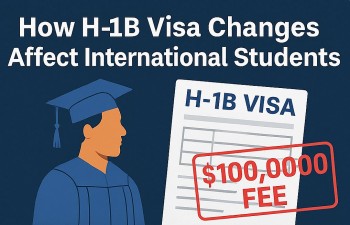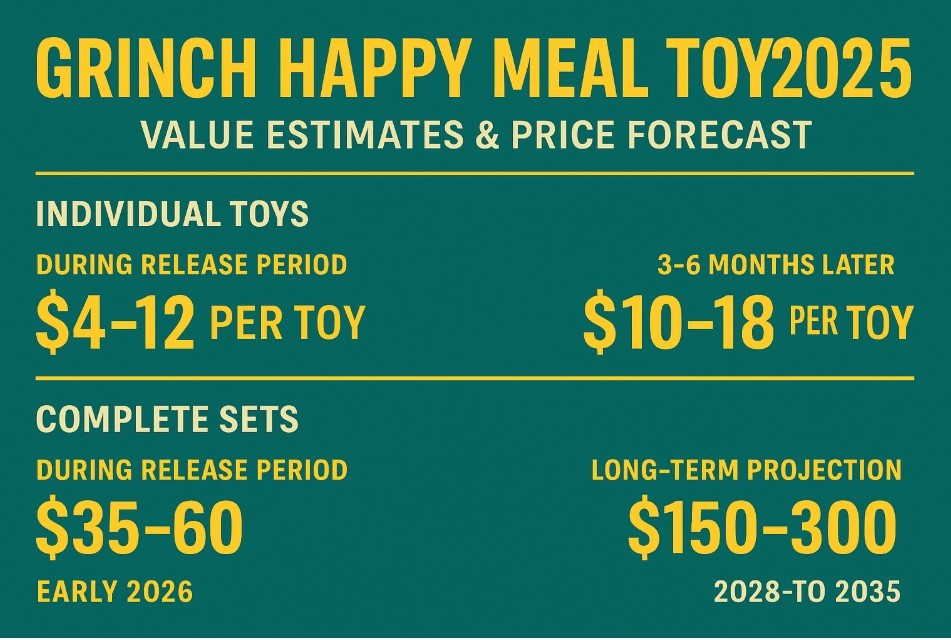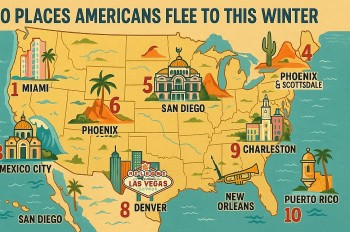December 2025 U.S. Visa Bulletin: What Indian Applicants in EB-1 & EB-2 Need to Know
 New H‑1B Visa Fee Rule: Who Must Pay and Who Is Exempt New H‑1B Visa Fee Rule: Who Must Pay and Who Is Exempt |
 H-1B Visas Under Trump: Stricter, Faster, and Paving a Path to Citizenship H-1B Visas Under Trump: Stricter, Faster, and Paving a Path to Citizenship |
 |
| December US Visa Bulletin EB-1 and EB-2 movement for Indians |
What’s new this month
The Visa Bulletin – December 2025 published by the U.S. Department of State brings modest but meaningful progress for Indian nationals in the employment-based (EB) immigrant visa categories — notably in EB-1, EB-2 and EB-3.
Here are the key moves for India (country of chargeability: India) in December 2025:
-
For EB-1 (First Preference: Priority Workers):
The Final Action Date (FAD) has advanced by one month, now set at 15 March 2022. -
For EB-2 (Second Preference: Professionals with Advanced Degrees / Exceptional Ability):
The FAD has advanced by approximately six weeks (1 month + 14 days) to 15 May 2013. -
For EB-3 (Third Preference: Skilled Workers / Professionals / Other Workers):
The FAD moves by one month to 22 September 2013. -
The Dates for Filing Applications (filing chart) for India remain unchanged this month:
• EB-1: 15 April 2023
• EB-2: 1 December 2013
• EB-3: 15 August 2014 -
A standout: EB-5 (Unreserved category – India) leaps ahead by five months to 1 July 2021.
-
Family-based categories for India remain largely stagnant, with very little forward movement.
In short, for Indian employment-based applicants the December bulletin is a positive step — albeit a modest one — showing continued albeit slow progress in the queue.
Why this matters
A. Understanding the charts
There are two major charts in each monthly Visa Bulletin:
-
Final Action Dates (FAD) – indicates the cutoff priority date; if your priority date is earlier than the date listed, a visa number is available (or will be), and adjudication or interview can proceed.
-
Dates for Filing – indicates the earliest date the agency (either the National Visa Center [NVC] for consular cases, or the U.S. Citizenship and Immigration Services (USCIS) in the U.S. for adjustment of status) will accept applications. Even if the FAD is not current, this chart lets you file earlier and lock in benefits (employment authorization, travel permit) in many cases.
For Indian applicants, the FAD is the more critical metric because Indian employment-based categories are heavily backlogged due to high demand and per-country limits. Thus even small advances can make tangible difference.
B. What the forward movement means
-
For EB-1 India: Advancing from say 15 Feb to 15 Mar 2022 means that individuals whose priority date is now before 15 March 2022 become eligible for visa issuance (or adjustment of status) if all other conditions are met.
-
For EB-2 India: The move to 15 May 2013 is more modest, but noteworthy because Indian EB-2 applicants have long waits; this brings some relief.
-
For EB-3 India: Again, a small advance but signals movement rather than stagnation.
-
For EB-5 India: The big jump of five months accelerates the backlog for investor-based green cards.
Overall, the slippage of the queue is being slightly reduced. Applicants whose priority dates now fall before the new cut-off dates should assess whether their case may now move to final action.
C. Limitations & caveats
-
Even though the cut-off dates advanced, they are still well behind current filings for many Indian applicants — meaning many with later priority dates are still waiting.
-
Filing eligibility (Dates for Filing) remains unchanged; so unless your priority date is earlier than the FAD, you may file (if allowed) but still wait for a visa number.
-
Movement is small; expectations of large jumps should be tempered.
-
Retrogression (a backward movement of cut-off dates) is always possible depending on visa-number usage and demand; monitoring is required.
-
The monthly bulletin reflects availability and backlog but does not equal automatic approval — your petition must be approved, all eligibility met, and interviews (if consular) passed.
Step-by-Step Guidance for Indian EB Applicants
If you are an Indian national pursuing an employment-based immigrant visa (green card) in EB-1, EB-2 or EB-3, here’s a practical roadmap for December 2025 and beyond:
Step 1: Determine your category and priority date
-
Confirm your employment-based category (EB-1, EB-2, EB-3) and your chargeability (likely India).
-
Find the date your I-140 was filed (or certified) — this is your priority date.
-
Identify if you are using adjustment of status (AOS) in the U.S. (USCIS) or consular processing through the NVC and U.S. embassy.
-
Confirm if your employer petition (if any) has been approved (I-140) and whether any labour-certification (PERM) issues apply (especially EB-2, EB-3).
Step 2: Check if your priority date is “current”
-
Compare your priority date against the Final Action Date for your category and India as listed above.
-
If your date is earlier than the cut-off (e.g., for EB-1 India 15 Mar 2022) → you may be eligible for visa issuance or AOS adjudication.
-
If your date is later → you must continue to wait; you may still prepare for filing (if eligible) but cannot complete final action.
-
-
Also check the Dates for Filing chart: if your date is earlier than the filing date cut-off, you may submit your adjustment (if USCIS is using that chart) or the NVC may invite you to file.
Step 3: Get your paperwork ready
Whether you’re near the cut-off or still waiting, proactive preparation is beneficial:
-
Ensure your I-140 (or I-360/I-526 for other categories) is approved or on track.
-
Gather all supporting documents (education, work experience, employer documents).
-
Monitor whether USCIS indicates it will allow filing using the Dates for Filing chart or require the Final Action Date chart. Make sure you check the USCIS website for that month’s guidance.
-
If using adjustment of status, prepare Form I-485 (Application to Register Permanent Residence or Adjust Status).
-
If consular processing, ensure you have been notified by the NVC and that your case file is complete and ready for visa interview.
Step 4: If your date becomes current — act quickly
-
Once your priority date is earlier than the FAD, you should:
-
File adjustment (if in U.S.) or schedule consular interview.
-
Submit biometrics and any supplementary requests promptly.
-
Prepare for employer/immigration attorney follow-up (job offer, continued employment, etc.).
-
Consider derivative beneficiaries (spouse, children) and their documentation for adjustment or visa interview.
-
-
Don’t delay: large volume of applicants means delays can still occur even when dates are current.
Step 5: For those still waiting — strategic actions
-
Stay informed: each monthly bulletin may bring movement.
-
Maintain your nonimmigrant status (H-1B, L-1, etc.) or consider options to extend or change status if needed.
-
Consider whether you qualify for premium category (EB-1 vs EB-2) or alternative sub-categories (e.g., National Interest Waiver under EB-2) that may expedite or circumvent backlog.
-
Consult an immigration attorney if you anticipate issues like job change, employer withdrawal, or want to explore priority date retention (“porting”) or other advanced strategies.
-
Keep your I-140 valid or monitor whether portability rules apply if changing employer (subject to certain conditions).
-
For children, monitor potential issues of “age-out” — although certain protections exist, it remains a factor.
Step 6: Watch for risks and changes
-
Visa numbers are finite; oversubscription can lead to backlogs and even retrogression of dates.
-
Monitor announcements by the Department of State and USCIS for changes in the filing chart usage.
-
If your case is close to the cut-off date, consider how employment changes, employer withdrawal, or other dynamics may impact eligibility.
-
Ensure your priority date is properly recorded and retained — typically, once your I-140 is approved and your priority date is recorded, you keep that date even if you change jobs (subject to portability rules) or if a subsequent I-140 is filed.
Focus on EB-1 & EB-2 India – What this bulletin signals
EB-1 India
Historically, EB-1 (which covers extraordinary ability, outstanding professors/researchers, and multinational executives/managers) is the most desirable employment-based category because of relatively faster availability of visa numbers and less backlog (though still non-trivial for India). The advancement of one month to 15 March 2022 is positive — it tells us that the queue is still moving, though at incremental pace. For those with priority dates in early 2022 and earlier, this is good news. For those with later dates, the wait continues.
EB-2 India
EB-2 India is often the bottleneck for Indian professionals (advanced degree or exceptional ability) because of heavy demand and chronically long backlogs (priority dates sometimes going back more than a decade). The move to 15 May 2013 is a welcome step. While it still means many Indian applicants will wait years, the direction is encouraging. It may also heighten discussion about whether category-restructuring or per-country limit reforms are needed to reduce wait times.
Strategic takeaway
-
If you are in EB-1 India with priority date earlier than ~March 2022: you should evaluate whether your case is ready for final adjudication.
-
If you are in EB-2 India with priority date earlier than ~May 2013: you may move toward final action soon; ensure your case is fully documented and ready.
-
If your priority date is much later: you still have time, but building readiness remains crucial — continue to maintain status, gather documents, explore alternative strategies (like EB-1 eligibility or NIW in EB-2), and monitor movement monthly.
Why the movement is modest and what to expect next
A. Underlying causes of backlog
-
Per-country ceilings in the U.S. immigration system limit the number of immigrant visas available to nationals of any one country (including India) per fiscal year, in each preference category. That causes Indian applicants to queue longer.
-
High demand from Indian professionals, particularly in tech, research and engineering, means many applicants are waiting with approved I-140s but cannot yet obtain visa numbers.
-
The overall annual numerical limit for employment-based immigrants is roughly 140,000 worldwide.
-
Instances where demand greatly exceeds supply means many applicants accumulate in the queue, pushing the cut-off dates far backward.
B. Why only slight advancement this month
Given the backlog magnitude, only incremental progress is possible without major policy changes. The fact that EB-1 and EB-2 moved at all for India is encouraging — it indicates the system is functioning and numbers are being used. But large leaps would require either less demand, increased visa numbers, or policy reform.
C. What could influence future movement
-
Return of visa processing capacity (post-pandemic or after consular delays) might accelerate movement.
-
Legislative or regulatory changes (e.g., altering per-country limits) could significantly reshape wait times.
-
Shifts in demand — if fewer filings are submitted, the backlog may ease.
-
Visa number spill-over from unused categories may help some categories advance faster.
-
USCIS/DoS policy changes about filing charts or priority date retention may influence timing.
D. Forecast & caution
Predicting visa-cut-off dates is always speculative. That said, if the queue trends continue, we may see modest monthly advances of a few weeks to a month in the near term for Indian employment-based categories. However, no guarantee exists; retrogression remains a risk if demand surges or visa-number use is inefficient.
Checklist for Indian Employment-Based Applicants — December 2025 Edition
| Item | Status / Action | Tip |
|---|---|---|
| Confirm your priority date | Yes / No | Check your I-140 approval or labour certification filing date. |
| Determine which chart applies (FAD vs Filing) | Yes / No | USCIS may publish whether the Dates for Filing chart is applicable for the month. |
| Compare your date to FAD | Eligible / Not yet | If before cut-off, you may move to final action; if not, continue waiting. |
| Ensure all documentation is complete | Yes / No | Employer letters, experience proof, education documents, etc. |
| Maintain non-immigrant status or lawful presence | Yes / No | If in U.S., ensure H-1B, L-1 or other status remains valid. |
| Prepare derivatives (spouse/children) supporting docs | Yes / No | Their applications depend on your principal case. |
| Monitor monthly Visa Bulletin | Yes / No | Go to DoS website each month for updates. |
| Consult immigration attorney if circumstances change | Yes / No | E.g., job change, employer withdrawal, priority date older but still not current. |
Conclusion
The December 2025 Visa Bulletin brings good news for Indian nationals in employment-based visa categories — particularly EB-1 and EB-2. While the advancements are modest, they are meaningful in a system where waiting times stretch for years. For those whose priority dates are now before the cut-off dates, the time to act is now: prepare your paperwork, confirm eligibility, and file promptly when possible.
For others still waiting, this month reinforces the importance of readiness, staying in status, monitoring the charts, and remaining patient. Incremental progress continues, but so does the backlog.
FAQs
1. What is the Visa Bulletin and why does it matter?
The Visa Bulletin is a monthly update from the U.S. Department of State that shows when immigrant visa applicants can move forward with filing or final approval. It determines when your priority date becomes current.
2. What is a priority date?
Your priority date is usually the date your employer filed your labor certification or I-140 petition. It decides your place in line for a green card.
3. What changed for India in EB-1 and EB-2 this month?
EB-1 India moved forward by one month, while EB-2 advanced by about six weeks. These shifts allow some applicants with earlier priority dates to proceed to final action.
4. Does this mean my green card will be approved right away?
Not automatically. Your priority date must be earlier than the Final Action Date, and all eligibility requirements must still be met.
5. What if my priority date is later than the cut-off?
You keep waiting. You can still prepare documents and maintain status, but your case cannot be approved until your date becomes current.
6. Can I file my adjustment of status using the Dates for Filing chart?
Only if USCIS confirms the use of that chart for the given month. They publish this update on their website.
7. How often do cut-off dates move?
Dates may move forward, stay the same, or even retrogress depending on demand and annual visa limits.
8. Could the dates move backward?
Yes. Retrogression happens if more applicants become eligible than the number of available visas.
9. Does changing jobs affect my priority date?
In most cases you can retain your priority date if your I-140 was approved and portability rules are met. Always confirm with an immigration attorney.
10. What should I do if my date just became current?
Act quickly. Complete your paperwork, respond to requests without delay, and prepare for your adjustment or consular interview to avoid processing setbacks.
 How Many Chinese Students Are in the U.S.? Latest Numbers, Visa Crackdowns, and What’s Next How Many Chinese Students Are in the U.S.? Latest Numbers, Visa Crackdowns, and What’s Next Chinese students have long been a significant presence in American universities, contributing to academic excellence and cultural diversity. |
 H‑1B Visa $100,000 Fee: What It Means, Who’s Affected, and Why It Matters H‑1B Visa $100,000 Fee: What It Means, Who’s Affected, and Why It Matters The new $100,000 annual fee for H‑1B visas is changing how U.S. companies hire foreign workers. Learn how it affects businesses, immigrants, and the tech ... |
 How H‑1B Visa Changes Impact International Students in 2025/2026 How H‑1B Visa Changes Impact International Students in 2025/2026 Discover how the new $100,000 H‑1B visa fee is reshaping opportunities for international students in the U.S. Explore its effects, alternative options, and career strategies. |
 How H‑1B Visa Changes Impact Workers in 2025/2026 How H‑1B Visa Changes Impact Workers in 2025/2026 Discover how the new $100,000 H‑1B visa fee affects foreign workers, U.S. employees, and industries. Learn who’s impacted, what’s changing, and how to adapt. |























